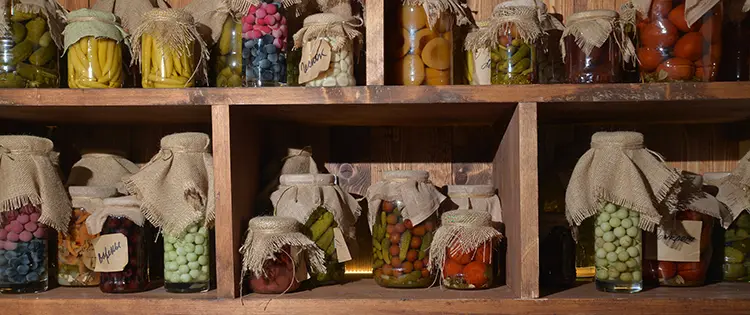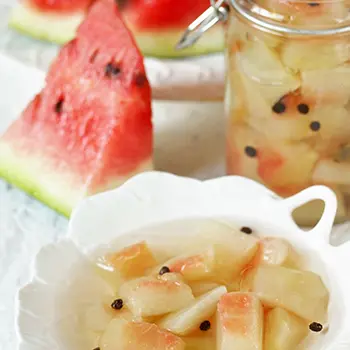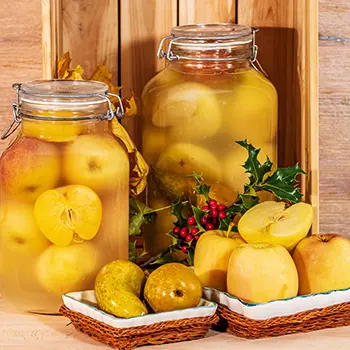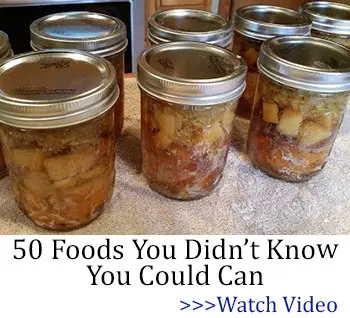As a homesteader, I always look for different ways to preserve any food in excess.
I believe I used every way of preserving food from fermenting, pickling, or canning food will never go to waste. These different ways to preserve food didn’t have to be only during the great depression or war.
Covid and other epidemics have had us locked away, and desperate for our daily essential nourishments. It caused havoc and nutritional deficiencies, especially in the elderly, babies, and growing kids.
The laid-back attitude that the new generation is used to has also made things worse. They know next to nothing about preserving food!
I prefer easy refrigerator pickles. The shelf life is also much longer and is more convenient.
In this article, I am giving short easy recipes for pickling Apples, Watermelon Rinds, and Cherries.
That being said, the big question is:
Why Pickle Food?
Pickle juice is packed with sodium and potassium. Known as electrolytes.
According to the Journal of the International Society of Sports Nutrition in 2021, pickle juice is known to reduce muscle cramps. If you can’t take pickles then yogurt, and bananas are also good for cramps.
Vinegar, sugar, and salt make a balanced brine to transform any fruit or veggie into a delicious pickle.
What Are The Benefits?
Pickling veggies or fruits contains natural protein, dietary fiber, potassium, and calcium. I usually prefer pickles with salt, vinegar, or olive oil and spices. I don’t follow a hard and fast rule and it is according to preference.
Pickling (adding acid) prevents spoilage and lowers the pH of preserved fruits and vegetables. Sugar helps to balance the tartness of the vinegar. Refrigeration also stops the growth of harmful bacteria, which can happen in case of accidental contamination.
Pickling What You Never Thought You Could
Cherries
Pickling cherries can be a delightful way to preserve their flavor and enjoy them in various dishes. Pickled cherries can be used in salads, served alongside cheese, or as a unique topping for various dishes.
Ingredients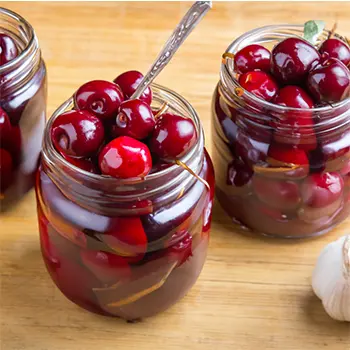
- 1 Pound fresh cherries, stemmed and pitted
- 3/4 cup apple cider vinegar
- 3/4 cup water
- 1/4 cup dark brown sugar
- 2 teaspoons whole black peppercorns
- 5 sprigs fresh thyme
- Quart jars or wide-mouth jars
- Optional: A few bay leaves, and 1 teaspoon of chili flakes
Method
Cut cherries in half and place them in a wide-mouth jar.
Add the vinegar, water, sugar, chili flakes and bay leaves into a pan. Bring slowly to the boil, stirring to dissolve the sugar. Let it simmer for 5 mins.
When it is slightly warm, pour it over the cherries. Cap the bottle tight and refrigerate.
The pickled cherries stay fresh in the refrigerator for over a month and sometimes longer. It is delicious with roast pork.
Pickling Watermelon Rind
You can pickle watermelon rind. It’s a delicious way to use the often-discarded part of the fruit. Pickled watermelon rind has a sweet and tangy flavor, and it makes for a unique and refreshing treat.
Ingredients
- 4 cups watermelon rind, peeled and cut into small, bite-sized pieces
- 2 cups white vinegar
- 2 cups water
- 2 cups granulated sugar
- 1 lemon, thinly sliced
- 1 tablespoon whole cloves
- 1 tablespoon whole allspice
- 1 cinnamon stick
- 1-inch piece of fresh ginger, sliced (optional)
Method
Peel the green outer skin from the watermelon rind and remove any remaining pink flesh. Cut the rind into small, bite-sized pieces. Place the watermelon rind pieces in a large pot, cover them with water, and bring to a boil. Boil for about 5 minutes, or until the rind is just fork-tender. Drain and set aside.
In a separate pot, combine the white vinegar, water, sugar, lemon slices, whole cloves, whole allspice, cinnamon stick, and sliced ginger (if using). Bring the mixture to a boil, stirring to dissolve the sugar. Add the boiled watermelon rind to the pickling liquid. Reduce the heat and let it simmer for about 10-15 minutes, or until the watermelon rind becomes translucent and absorbs the flavors.
Allow the pickled watermelon rind to cool to room temperature. Once cooled, transfer it along with the pickling liquid and spices to clean, sterilized jars. Seal the jars and refrigerate them for at least 24 hours before consuming. The longer the pickles sit, the more the flavors will meld.
Enjoy the pickled watermelon rind on its own as a snack, as a side dish, or as a topping for salads.
Pickled Apples
While apples are not typically pickled in the same way cucumbers or other vegetables are, they can be preserved through pickling processes, often in the form of spiced apple pickles or apple chutney.
Ingredients
- 1 Pound Apples
- 1 cup water
- 1 cup apple cider vinegar
- 1 teaspoon salt
- 1/2 Cup sugar
- 5 Star anise
- 1 Cinnamon stick
- 1 Teaspoon vanilla extract or a slit vanilla pod
Method
Remove the core and seeds and turn each apple onto a side. Slice them. Place them in a wide mouth jar arranging them on the sides and stacking in the middle. Be careful not to bruise them.
Add vanilla extract, cinnamon stick, and star anise pods to the jar, then set it aside and make the pickling brine. Add water, vinegar salt, and sugar to a medium saucepan and bring to a boil.
Pour the hot brine completely covering the apples. Close the lid tightly. Let it cool until it reaches room temperature. Refrigerate.
Here are reasons for using some additional ingredients to add more flavor to pickled apples:
- Dilutes the salt and also adds flavor to pickle the apples
- Adding cinnamon sticks gives a lovely flavor and aroma and is a gastronomical delight to the senses.
- Star anise has a different flavor and adds a lovely taste.
- It adds that lovely sweet smell and warmth. Vanilla has a beautiful fragrance and sweetness when added to the pickling brine.
Of course, these are optional in case you can’t find these ingredients. The main purpose is to quickly preserve any veggies or fruits you find during a particular season.
Important Notes
- You can increase or decrease the amount of brine.
- These are homemade recipes to preserve veggies and fruits during excess periods.
- The brine you use can be made sweeter or sour according to your preference.
- Sterilizing Jars is a must to preserve the pickles. I usually wash thoroughly and boil the jars and covers for at least a good forty-five minutes.
Then I drain the jars and make sure they are bone-dry before I start making pickles.
What is good for someone may not be good for another person. You need to consider whether your tummy can handle some types of acidity. You can use your imagination and tweak these recipes to suit your palate. However, bear in mind that Vinegar and salt are needed to preserve the pickles. They harbor good bacteria and especially since it’s stored in a refrigerator, it is safe to eat.
You may also like:
An Insanely Effective Way to Build a 5 Year Food Stockpile (Video)
5 Recipes That You Can Make If You Live Fridge-Less

